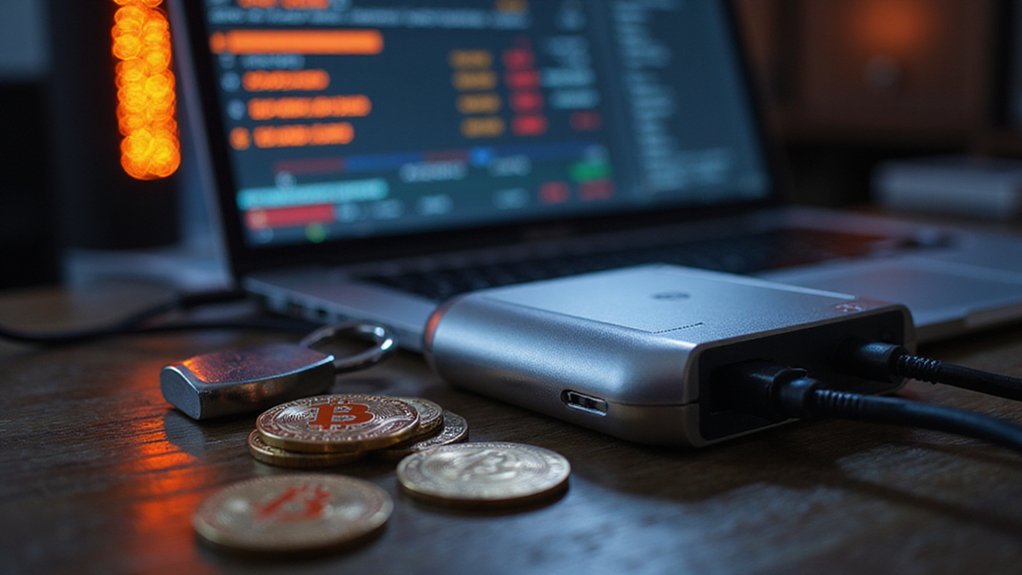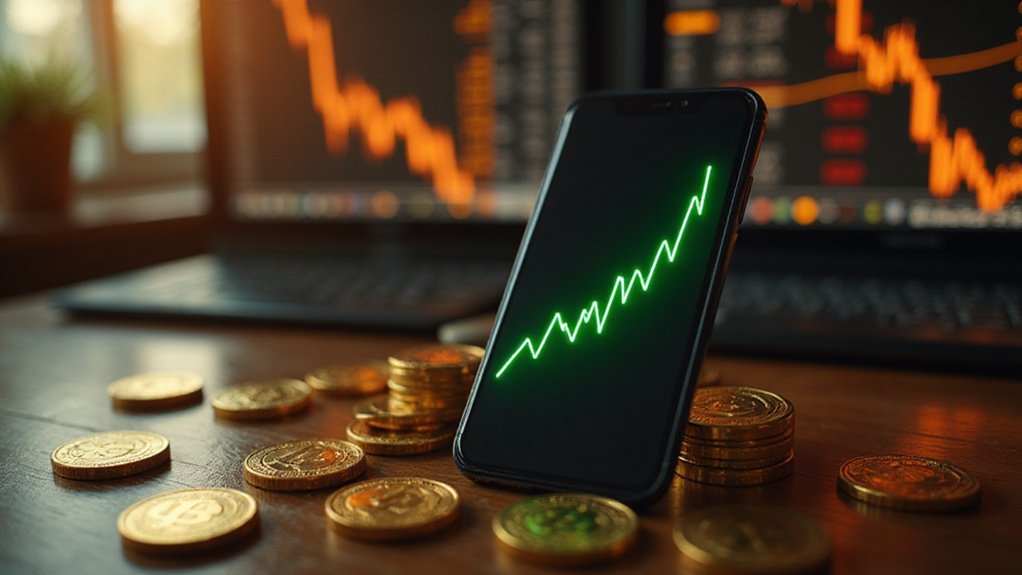Spotting suspicious cryptocurrency activity requires monitoring several key indicators: unusually large transfers to high-risk jurisdictions, rapid movements between multiple wallets (classic money laundering behavior), usage of mixers or tumblers designed to obscure transaction trails, and circular transaction patterns that serve no legitimate purpose. Modern AI-powered surveillance systems process vast blockchain datasets to identify these anomalies automatically, generating alerts for compliance teams when transactions deviate from normal patterns—though sophisticated criminals continue evolving their techniques alongside detection capabilities.

How does one distinguish between legitimate financial innovation and elaborate digital sleight of hand in a domain where pseudonymous transactions occur at the speed of light across borderless networks?
The answer lies in sophisticated monitoring systems that combine technological prowess with investigative intuition—a digital cat-and-mouse game where the stakes are measured in billions.
Modern cryptocurrency surveillance operates on two distinct planes: on-chain analysis, which examines blockchain data for suspicious patterns after transactions occur, and off-chain monitoring, which scours websites, social media, and the dark web to identify threats before they materialize.
Cryptocurrency surveillance employs dual detection layers: post-transaction blockchain analysis and proactive threat hunting across digital platforms before schemes unfold.
This dual approach creates a thorough detection framework spanning from pre-scam intelligence gathering to post-incident forensic analysis.
Machine learning algorithms have revolutionized this landscape, processing vast datasets to identify fraudulent patterns in Bitcoin and Ethereum transactions with remarkable precision.
These AI systems generate automated alerts when detecting high-risk addresses, unusual transaction volumes, or suspicious frequency patterns—capabilities that would overwhelm human analysts operating at scale.
Financial institutions have developed sophisticated red flag systems that trigger enhanced due diligence procedures.
Large, unexplained cryptocurrency transfers warrant immediate scrutiny, particularly when involving high-risk jurisdictions or sanctioned entities.
Rapid transfers between multiple wallets often signal money laundering operations, while mixer and tumbler usage represents perhaps the most obvious attempt to obfuscate transaction trails. Authorities specifically target the identification of transactions involving these mixer services due to their role in enabling criminal money laundering activities.
The regulatory framework surrounding these activities centers on Suspicious Activity Reports (SARs), which compliance officers must file when encountering potential money laundering or fraud indicators.
These reports document unusual transaction patterns and large transfers to high-risk areas, creating an audit trail that satisfies regulatory requirements while supporting law enforcement investigations. Financial institutions must implement comprehensive KYC practices to verify customer identities and monitor their transaction behaviors as part of their AML obligations.
Blockchain forensic tools provide investigators with unprecedented visibility into transaction flows, offering detailed visualizations of complex network relationships.
These specialized platforms trace fund origins across multiple wallets, identifying anomalies such as circular transactions or rapid-fire transfer patterns that suggest illicit activity. Investigators also track multiple accounts operated by the same entity to detect coordinated suspicious activities across different platforms.
Enhanced due diligence processes have evolved beyond simple account verification to include continuous transaction monitoring, multi-factor verification protocols, and thorough background checks.
This perpetual vigilance reflects the reality that cryptocurrency fraud schemes grow increasingly sophisticated, requiring equally advanced detection methodologies to maintain financial system integrity.
Frequently Asked Questions
What Legal Obligations Do I Have When Spotting Suspicious Crypto Activity?
Legal obligations regarding suspicious crypto activity vary by jurisdiction, though most regulated entities must file Suspicious Activity Reports (SARs) within 30 days of detection.
Financial institutions face mandatory reporting to authorities like FinCEN, while maintaining strict confidentiality (alerting suspects defeats the purpose, naturally).
Compliance failures trigger regulatory penalties.
Enhanced due diligence becomes essential for high-risk transactions, requiring robust KYC processes and continuous monitoring systems to satisfy evolving anti-money laundering requirements.
How Do I Report Suspicious Cryptocurrency Transactions to Authorities?
Suspicious cryptocurrency transactions require reporting through FinCEN Form 111 for most financial institutions, though individual obligations vary considerably.
Exchanges typically maintain internal reporting mechanisms that funnel to authorities, while blockchain analytics tools like Chainalysis facilitate detection.
The Bank Secrecy Act governs most reporting requirements, though determining which agency receives what information—FinCEN, IRS, SEC—depends on transaction specifics and one’s regulatory status.
Can Using Privacy Coins Automatically Trigger Suspicious Activity Alerts?
Privacy coins don’t automatically trigger alerts—the irony being that their very opacity makes them suspicious by design.
Financial institutions flag privacy coin transactions precisely because standard blockchain analytics can’t penetrate their cryptographic obfuscation.
While automated systems may struggle with direct transaction tracing, compliance platforms generate risk scores based on behavioral patterns and heuristic analysis, effectively marking privacy coin usage as inherently high-risk activity requiring enhanced scrutiny.
What Happens to My Account if I’m Falsely Flagged for Suspicious Activity?
When falsely flagged, one’s account typically faces immediate restrictions—transactions freeze, withdrawals halt, and certain features become inaccessible.
The platform initiates an investigation requiring additional documentation and enhanced KYC verification.
Users can appeal through designated channels, though resolution timeframes vary considerably.
If investigators determine the activity was legitimate, accounts are reinstated with potential ongoing monitoring.
The process, while inconvenient, reflects regulatory compliance requirements rather than punitive measures against the account holder.
Are There Different Thresholds for Suspicious Activity in Different Countries?
Yes, suspicious activity thresholds vary dramatically across jurisdictions—a regulatory patchwork that would make even seasoned compliance officers wince.
The U.S. mandates reporting at $3,000, while the UAE sets its threshold at AED3,500 (roughly $950).
Germany eschews specific amounts entirely, relying instead on “clear indications” of suspicious behavior.
Australia and Singapore maintain threshold ambiguity, leaving crypto platforms to navigate this delightfully inconsistent landscape of international compliance requirements.









